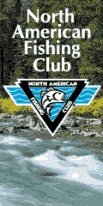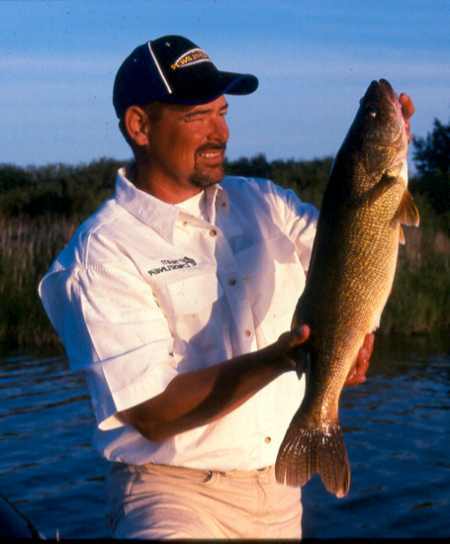
|
|||

Look as Sharp as your hooks Click here for the latest in Walleyes Inc. outdoor wear Promotional Team Favorites Lodging food and more 
Free 90 day Risk free trial offer click here 
|
Hot Walleye Trolling Techniques by Rick Olson Getting a crankbait to run where you want it, when you want it, is the key to successful crankbait use. The idea is to get a bait into a walleye’s dining room and keep it there as long as possible, thus increasing your odds for finding a few takers. Keeping it there isthe most difficult aspect of trolling crankbaits, and is what separates the highly successful from the hopelessly frustrated. The process would be a whole lot easier if ol’ marble eyes stayed clear of drop offs,rock piles, points, and assorted structures. In fact, if he would only stick with featureless flats, with no depth changes, and no structure, it’d be snap to keep a bait in the zone. Although this particular scenario does happen, it’s more of an exception when you look at how varied walleye waters can be, as well as their seasonal needs and movements. Getting a bait to run at a particular depth isn’t all that tough, and can be simply a matter of selecting a bait that will reach a maximum running depth that falls within a foot or so of a productive zone. It’s when you have a varying bottom that things gets a little tricky, especially if you’re faced with constant depth changes. Keeping a bait running where you want it takes too much time and too many adjustments to really be efficient, especially if you’re using standard trolling techniques. Standard techniques include flat lining cranks, using super braids ( which can increase maximum diving depths ), and adding weight in the form of inline sinkers and snap weights. An excellent option that is underutilized and often misunderstood is trolling with leadcore, which is a weighted line. Leadcore allows you to basically troll any crankbait you like, at any depth you want. That means trolling shallow running baits like the super hot Jointed Shad Rap, in deep water ( as deep as you need ), and deep running baits like the Down Deep Husky Jerk, in even deeper water. It will also allow you to get to specific depths with a minimum amount of line out, which gives you more control. With a minimum amount of line out you can quickly adjust to a depth change, which will keep your bait in the zone longer, and greatly increase the overall amount of control. Trolling with leadcore plays right into the hands of the most uptight control freak, as they can have complete control ninety-nine percent of the time. Another advantage to leadcore is it’s lack of stretch, which will transfer the action of a properly running cranbait to your rod tip. By watching the tip you can actually see the rhythmic vibrations of clean running bait. If a bait is fowled, you’ll know by a lack of action in the rod tip. Because you can see it, and because you have a minimum amount of line out, you can quickly reel a fowled bait in and get it back in the water, thus saving valuable time. You can also see if a bait is digging into the bottom, which allows
for quick and accurate depth adjustments. A bait dragging across
the bottom will be indicated by a rod tip that is pulled back and then
snapped forward, and you my even see the wiggle of the bait in between.
In most cases you’ll probably be trying to get a bait to run close, but
not on, the bottom. The characteristics of leadcore are perfect
for this particular scenario, and is why many of the country’s top tournament
pros rely heavily on it’s effectiveness.
capacity reels. Depending on the depth you want to achieve, it may require five or six colors of leadcore, or more, to get the job done, which will quickly fill up the smaller reels with limited capacities. Rods in the seven foot range are in order, and include models like the TS70TR70M1 Rapala Tournament Class Series, which has a medium action. The longer softer rods will help compensate for the lack of stretch in the leadcore line, and give you some needed fish fighting power. The weight of leadcore you chose can vary but something in the eighteen to twenty-seven pound range will do just fine. As mentioned earlier, leadcore is colored, and each color represents 10 yards of line. The most misunderstood part of the whole program is the leader, which
is a portion of monofilament that separates the leadcore from the crankbait.
A length of eight or ten feet mono in an abrasion resistant line like Rapala
Tough, is what you’re looking for. Many anglers believe that longer leaders
can mean more fish, but the fact is an eight or nine footer is about all
you’ll ever need. Longer leaders simply mean more line out
resulting in a loss of control, and control is what it’s all about.
Rick Olson
Fish Clix Banner Exchange Please visit these site sponsors |
||
|---|---|---|---|
